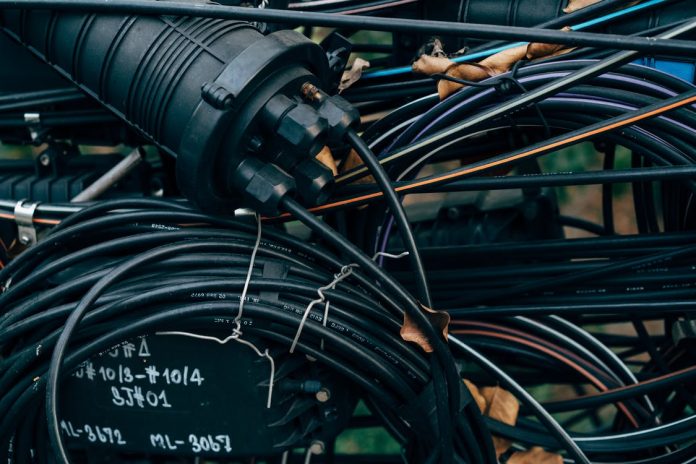FTTC is a high-speed broadband technology which enables speeds of up to 76Mbps. FTTC stands for Fibre to the Cabinet, and it uses fibre optic cables to transmit data within the local exchange. Fibre optic cables are used to connect homes and businesses to cabinets located in the street. From there, existing copper wires are used to carry the signal into your home.
Many people have heard of fibre-optic broadband, but what is it exactly?
The name “fibre optic” is a bit misleading as it doesn’t actually refer to any particular type of material or construction method. Instead, it simply means that all data travels along individual strands of glass-coated plastic cable that are thin enough for light to pass through them unimpeded (hence the term “light”). The advantage of this is twofold: firstly because light travels much faster than electrons (which are what travel through copper wires), fibre optic cables can deliver data much faster than ordinary copper ones; secondly, because light does not corrode or degrade over time in the same way as electrons do, fibre optic cables can be used for very long distances with minimal loss of quality over time.
How does FTTC broadband work?
FTTC broadband uses copper wires to connect your house to the local street cabinet. The street cabinet then connects to a fibre optic cable that runs all the way back to the BT exchange. Here, your connection is converted into radio waves, which travel at high speed over long distances. These radio waves then travel through the air from your local exchange back to your house where they are converted back into electrical signals and travel down the copper wire (hence the name VDSL2).
What equipment do I need for FTTC Broadband?
You’ll need a modem/router that’s compatible with VDSL2 technology (check this on our Which? Buyer’s Guide). You should also check that your phone line is capable of supporting an internet connection before getting started as many older lines won’t be able to support it.
FTTC broadband uses fibre optic cables to connect a home or business with the internet. This cable can be up to 20 miles long, although it’s usually much shorter than that. The cable connects to your local telephone exchange and then uses copper lines to provide service to your property.
The advantage of FTTC broadband is that it provides faster speeds than DSL or cable modem. It also allows for more bandwidth because there are multiple channels on the line between your PC and your ISP’s server farm.
What makes FTTC broadband is better than others
FTTC broadband is better than others. FTTC stands for Fibre To The Cabinet and it’s a type of high-speed internet connection that uses fibre optic cables to get to your home. It’s usually faster than ADSL, the older type of broadband connection.
FTTC uses VDSL2 technology, which means that each individual customer receives their own dedicated channel, rather than sharing one with everyone else in their area. This makes it much easier to fix problems when they occur and gives customers reliable speeds at all times.
FTTC broadband also has lower latency than ADSL2+. This means that you will be able to play online games without any delays or lags in-game performance!
You should also know that FTTC broadband offers more bandwidth compared to other types of broadband connections like ADSL2+ or VDSL2 (up to 330 Mbps). This means that you can use multiple devices at once without experiencing network congestion issues.
FTTC broadband is cheaper than other types of broadband service because it uses an existing wire in your home rather than having to install new cables from a central location to your doorstep.
No telephone line required – Unlike ADSL lines which require a telephone line, FTTC doesn’t require one so you won’t have to pay extra for this part of your service.
The faster your connection, the more time you’ll have to enjoy downloading music, movies and games or surfing the web. You can also use it to make video calls at home or abroad.
If you opt for a TV package with your FTTC service, you’ll be able to enjoy a huge choice of channels and bundle it with your superfast internet connection for one simple price. You can watch live TV on your TV or laptop, record programmes using the free set-top box or watch catch-up services such as BBC iPlayer and 4oD.
For more fibre cabinet fttc information, click here.

